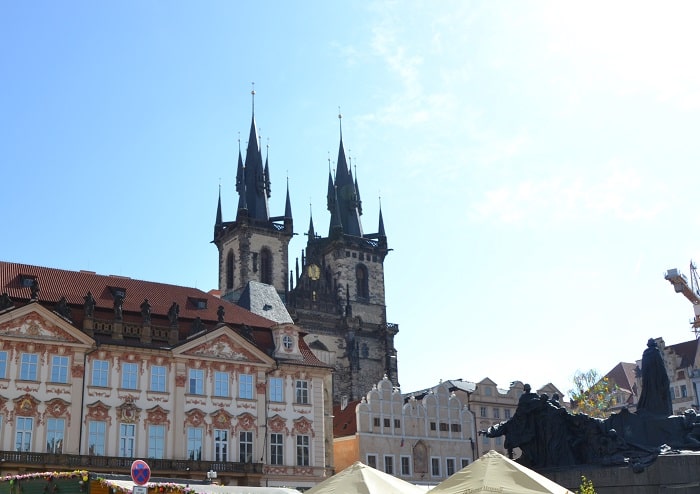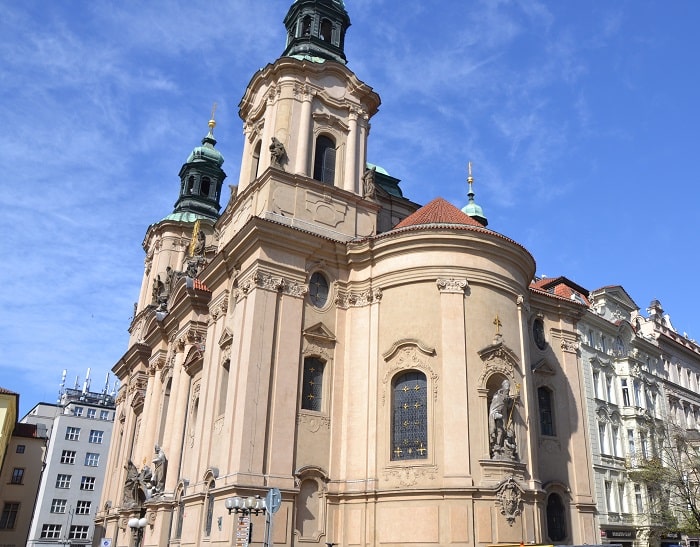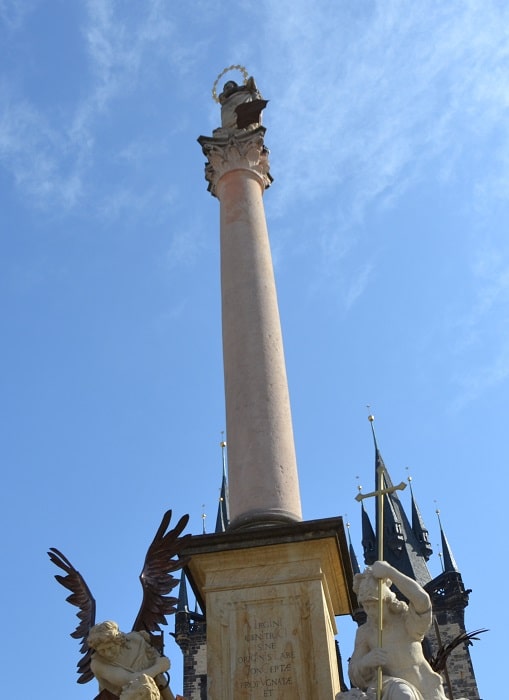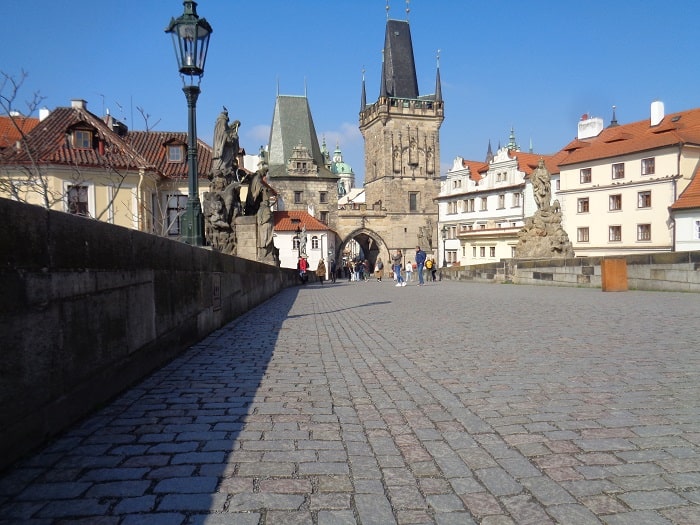Old Town Square
The Old Town Square is one of the most famous sights in Prague. It has an area of 9,000 square meters.

History
The square is older than the Old Town itself. At the beginning, it was called the Big Square. But since there used to be a market here, it was renamed to the Old Market, and later to the Old Town Market. The current name was established in 1895.
The market has always been the center of medieval town life, its pride and sorrow. Even back then, there were certain laws and rules. For example, merchants had to pay fees and fines to the officials. Early on, the goods were laid out on the ground, but over time small wooden huts or ‘kotcy’ were built.
Till this day, the square has retained its irregular outline. Over the years the level of the Old Town Square has been slowly elevated due to the frequent floods. So it’s approximately 3-4 m higher now (each year the level was raised by 30-40 cm). That is why the first floors of many buildings were originally basements.
Temples and monuments
Church of Our Lady before Tyn
The dominant feature of the square is the tall Gothic church with two 80-meter towers. It’s called Tyn or the Church of Our Lady Mary before Tyn. Originally there was the small Romanesque church with a hospital for foreign merchants (11th century). Two centuries later a new Gothic church was built, and by the middle of the 14th century the construction of the present church began. It was designed in the late Gothic style under the influence of the French architect Matthias of Arras and later the German architect Peter Parler.
It’s a three-nave basilica, about 52 meters long and 28 meters wide; the central nave is about 44 meters high. There is a magnificent north portal, which was created by Peter Parler in 1390. The tower’s spires are topped by eight smaller spires.
The organ is the oldest in Prague and it was made by German master Hans Heinrich in 1627. The last restoration of this ancient musical instrument was carried out in Bonn in 2000.
If you have time, visit the church. It can be accessed through the house number 14.
Jan Hus Memorial
The Jan Hus Memorial was made by sculptor Ladislav Šaloun. It was unveiled on 6 July 1915 to honor the 500th anniversary of Jan Hus’s execution. He was a theologian, a philosopher, a Church reformer and an inspiration of Hussitism.

The Church of Saint Nicholas
The Baroque church of St Nicholas was designed by the architect Kilian Ignac Dienzenhofer. The consecration took place in 1737. At the end of the 18th century (during the imperial reforms) the church was closed and for 80 years it was used as a warehouse. All that time, the building was deteriorating and some even proposed demolition. The fate of the church was changed because of an agreement with the Russian Orthodox Church. In 1868 the church was rented for 30 years to the chairman of the Slavic Committee, Count P. A. Golenishchev Kutuzov. On 16 August 1874, the consecration according to the Orthodox rite took place.
In 1916, at the insistence of the Viennese court, St Nicholas Cathedral was closed, and four years later it was given to the Hussite Czechoslovak Church, to which it belongs now.
During the Prague uprising in 1945, the church was used by the Czech partisans as a concealed site for the Radio Prague International, while the main radio building was under attack by the Waffen-SS.
The magnificent crystal chandelier was created by glass masters from Harrachov at the request of the Russian Emperor Alexander II. It was not a coincidence, back then their products were very popular in Europe.
The frescoes are the work of Bavarian artist Damian Asam.
Organ concerts regularly take place in the church.
Marian column
The Marian column was erected in 1650. The sculptor was Johann Georg Bendl. It was a symbol of the victory of Bomemians over the Swedish Empire in the Battle of Prague in 1648 (the final battle of the Thirty Years’ War).
It was one of the oldest Marian columns in Europe. The height was almost 16 meters, however there was also a two-meter gilded statue of the Virgin Mary on top of it. The base of the column was hollow, and it served as a chapel.
In 1918, the column was destroyed, because it was a catholic symbol and it also represented the monarchy. In 2020, a copy of the original column will be re-erected.

Meridian
Prague’s meridian is located near the monument of Jan Hus, and it used to determine time in the past. On a sunny day, the shadow of the Marian column fell over it exactly at noon.
There are specialists who believe that such places represent the powerful energy of the Earth. That’s why some are sure that, if you walk along this line and make a wish, it will come true.
